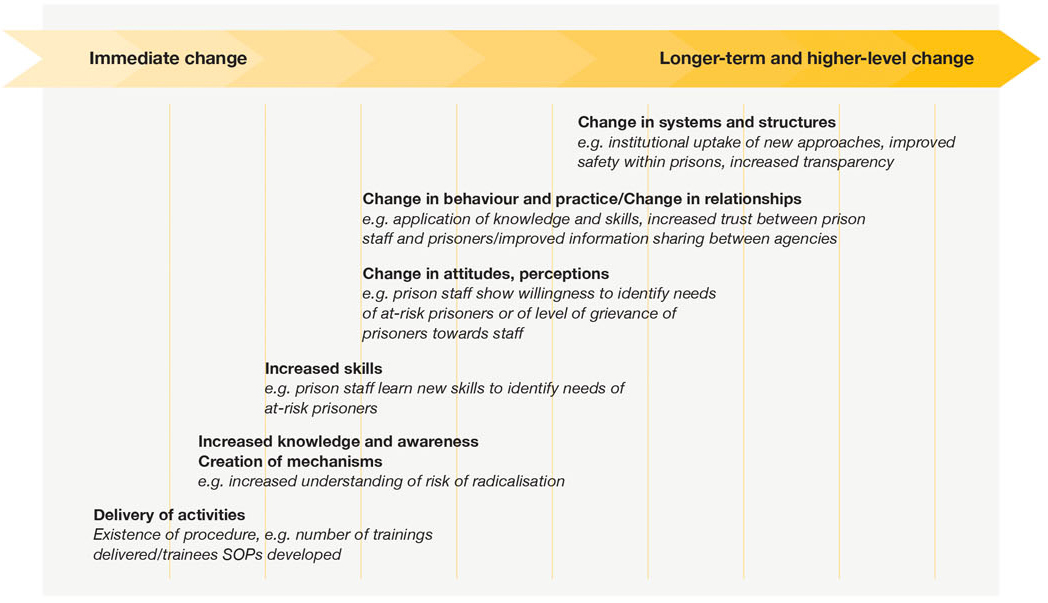Plotting levels of change from short term to long term to identify the different levels of change and steps towards them across a programme.

This tool is most useful at all stages of the programme cycle. It can be used together with:
1.1 Understanding the VE challenge
2.2 Articulating change
4.3 Prioritising indicators
4.4 Indicator bank
5.4 Outcome harvesting
Questions to consider
- What change is achievable within the timeframe of the programme? In other words, if the project runs for six months, it is unlikely to achieve institutional change (change in systems and structures), which would take longer.
- What change is feasible given the inputs and resources of the project (nature and scope of activities, human resources available, budget limitations, etc.)
- What change would the project most directly contribute to?
- What change is the project team accountable for and what change relies on other stakeholders (such as CSOs or government partners)?
- What change is feasible to measure and report on within the project cycle?
Levels of change within a PVE project working in prisons with returned foreign fighters
 Linkages between attitude and behavioural change are complex and not linear. Whilst changes in attitudes can lead to changes in behaviour, it is possible to change behaviour without changing deep-seated
attitudes or beliefs.
Linkages between attitude and behavioural change are complex and not linear. Whilst changes in attitudes can lead to changes in behaviour, it is possible to change behaviour without changing deep-seated
attitudes or beliefs.
The evaluation of the programme found that the provision of secondary education through the SYLI programme reduced the likelihood of youth participating in violence by 16%, yet it increased support for political violence by 11%. Where the programme combined both secondary formal education and civic engagement, the likelihood of youth both participating in and supporting political violence were reduced by 13% and 20%, respectively. The study concluded that integrated approaches which provide education and opportunities for youth to influence and feel heard were more effective in reducing both participation in and support for political violence.
Source: B. Tesfaye, Critical choices: Assessing the effects of education and civic engagement on Somali youths’ propensity towards violence, Mercy Corps, 2016




